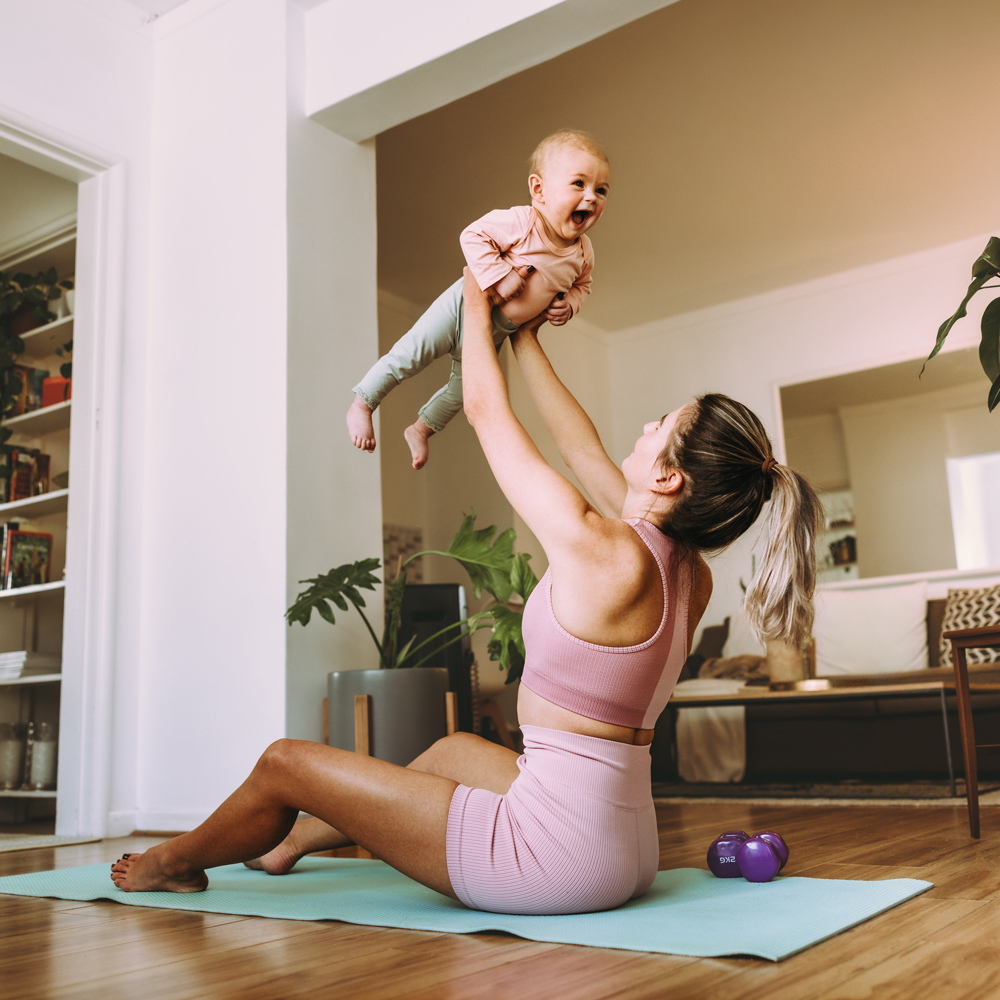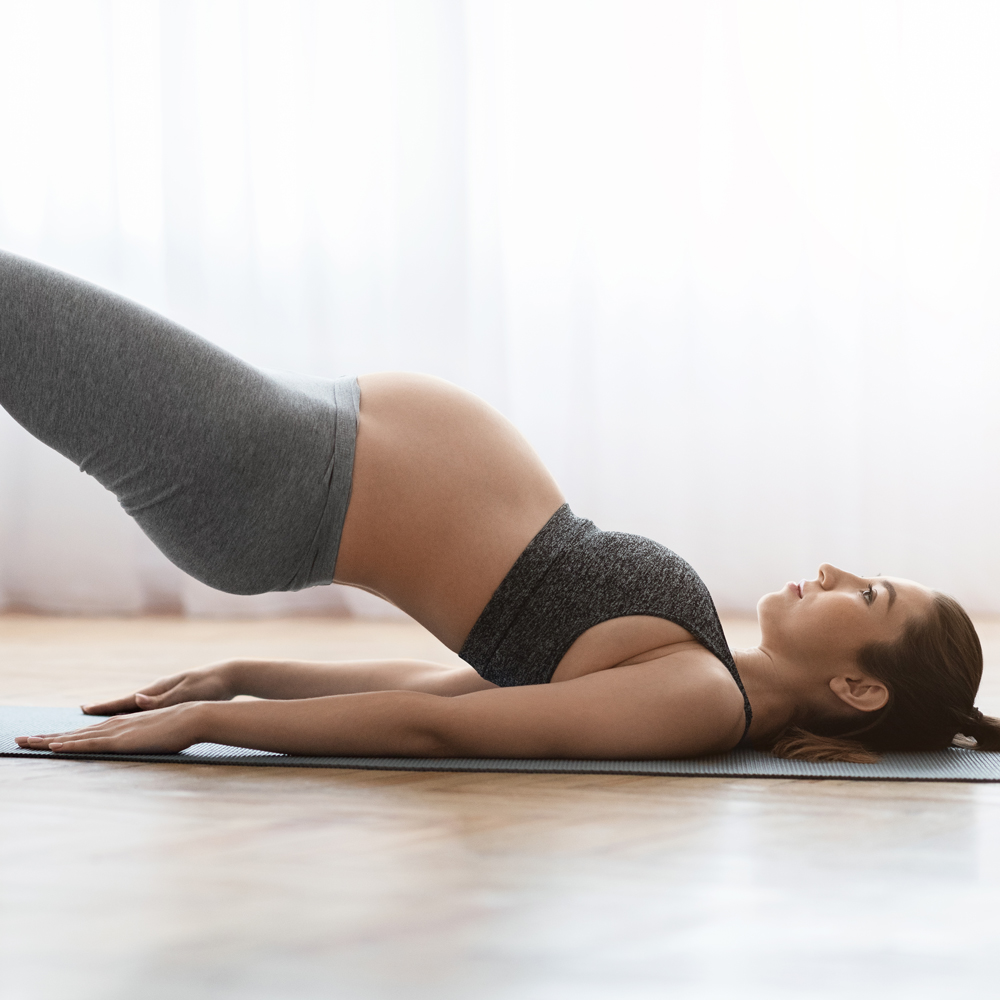Work Out Safely With Move It Mama’s Advice About Exercising With a Prolapse
This article is proudly brought to you in partnership with Move It Mama.
What Is Pelvic Organ Prolapse?
Pelvic organ prolapse (POP) is when one or more of the pelvic organs (uterus, bladder or rectum) ‘drop’ or lose their position within the pelvis. The pelvic floor holds up these organs from below and supports them to stay in place, alongside fascia and ligaments. POP is often caused by pregnancy and childbirth, where the pelvic floor has been weakened or damaged.
POP can present in varying degrees (stages 1 to 5), and is when either the uterus, rectum or bladder transcends downward into the vagina (either partially ie. ‘incomplete’ or fully i.e. ‘complete’).
Some people don’t know they have a prolapse (they are without symptoms – or perhaps put what symptoms they do have as being ‘normal’), while others may feel pain, a heaviness, downward pressure or even bulging at the vagina, painful sex, as well as other symptoms of pelvic floor dysfunction like urinary incontinence.
POP is really common; one in three postpartum people will experience a prolapse to some degree. While it’s common, it isn’t normal and will likely get worse if ignored. Above all, it needn’t be ‘put up with’.
ADVERTISEMENT
So, how do I know if I have a prolapse?
The best way to know is to see a pelvic health specialist and have an internal exam. We recommend that anyone postpartum (whether questioning a POP or not) visits a pelvic health physio before commencing exercise, and after having a baby. It really is the best way to know where to start and will put you in the most informed and empowered position.
Can I exercise with a prolapse?
In short, yes! But there are considerations to be made:
- Visit a pelvic health physio. Whether you think you might have a prolapse or not, they are the best people to speak to postpartum, as they can offer you a tailored rehabilitation plan or tailored programming should you need it
- Be mindful of exercise intensity, especially in terms of load and impact. Loading yourself up with weights that are too heavy and/or going about super high-intensity jumping/running-based exercises are likely going to exacerbate the issue. When experiencing POP, high intensity and heavy load activities can often just add extra and unnecessary pressure, strain, and load to an already compromised pelvic floor and core system.
- As above, avoid exercises that make you feel pressure on the pelvic floor. Exercises that cause excessive straining should be avoided. Most of all, exercises should feel good; if they don’t, please ensure you stop.
- Where possible, work with a professional who can guide you on a specific POP-friendly programme and can help point out any ‘red flags’ for you so far as specific exercises you shouldn’t be doing.
Every person is different. What feels good for one person might not feel good for another. This is why we always encourage people to work alongside a specialist physio where needed. Exercise really is one of the best things we can do for ourselves, and a POP shouldn’t have to stop you from regularly exercising.
Move it Mama’s Personal Trainer Jess is pre and postnatal qualified and leads a postpartum-specific session every week that is POP friendly. You can read more about these sessions here.
Safe bodyweight exercises to try
Squats: Not everyone with a prolapse will feel good doing a squat, but many will. Use the breath and work with it; inhale on lowering and exhale as you come back to standing. Keep the squat stance a little narrower and lessen your depth, to help manage any downward pressure or strain.
Foot elevated (couch arm/chair/bench) hip bridge: A great extension of the hip bridge exercise, and fantastic for strengthening the glutes alongside the pelvic floor. The upper back stays on the ground with the feet on a couch arm/chair. Exhale and lift the pelvic floor as you drive the hips up and squeeze the glutes at the top. Relax, lower, and inhale.
Kneeling good morning: Hands placed behind the head, draw the shoulder blades together by pulling the elbows back. Ensure ribs are over hips as you start. Hinge at the hips by sticking the butt down and back, and folding until about parallel. Drive back up and squeeze the glutes at the top. A great exercise for strengthening the posterior chain.
Move it Mama’s pregnancy/postpartum sessions offer a variety of bodyweight exercises that can also be really beneficial to hip and pelvic stability throughout pregnancy and postpartum. Join the movement today.
"*" indicates required fields





